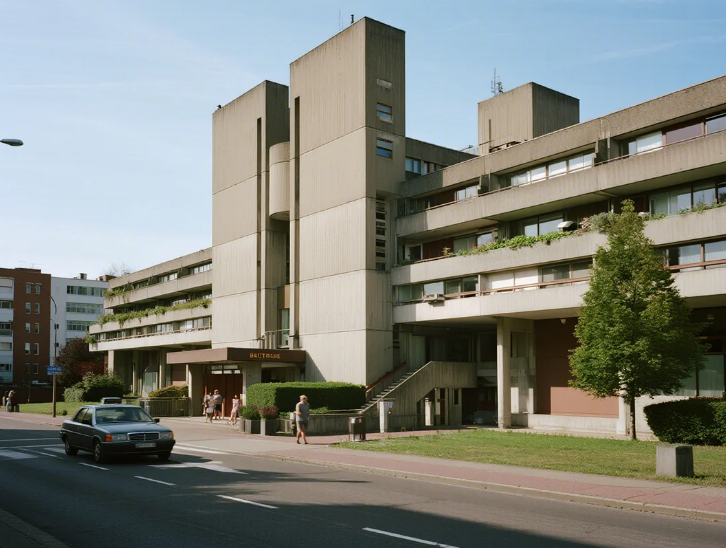Are We Falling for the Brutalist Comeback Scam of Luxury Concrete Slums? post-war housing scams
- Dennis Asis

- Aug 28, 2025
- 4 min read

In recent years, a striking trend has taken hold in urban landscapes worldwide: the re-emergence of Brutalist architecture. Once viewed as stark and uninviting, these concrete structures are being rebranded as "luxury living spaces." But is this a genuine revival, or a clever marketing tactic to disguise less desirable housing as upscale? This post explores the complexities of the Brutalist resurgence and its implications for modern urban living.
The Allure of Brutalism
Brutalism, known for its raw concrete surfaces and bold geometric shapes, gained popularity in the mid-20th century due to its functionality and cost-effectiveness. However, it soon became associated with urban decay and unappealing social housing. In recent years, some have started to embrace this architectural style as a return to authenticity, rejecting the overly polished aesthetics of modern design.

Supporters claim that Brutalist structures embody resilience and strength, reflecting the spirit of the cities they occupy. For example, the Boston City Hall, completed in 1968, evokes a sense of permanence and civic pride. Yet, as landlords promote these trends, we must ask whether we are genuinely appreciating the architecture or simply being sold a slick narrative.
The Rebranding of Concrete Slums
As cities face housing shortages and skyrocketing rents, some landlords have begun marketing their aging Brutalist buildings as "luxury apartments." This often involves superficial upgrades—like a fresh coat of paint and trendy furnishings—while serious issues like outdated plumbing and poor insulation remain intact. post-war housing scams

For instance, where a landlord brushed over visible cracks and outdated fixtures with trendy marketing lingo like "urban chic" to attract tenants. However, many renters soon discover that the "luxury" comes with significant drawbacks, such as pests and insufficient heating during the winter months.
The Impact on Communities post-war housing scams
The prevalence of luxury concrete slums profoundly impacts the surrounding communities. As these properties market to wealthier renters, long-term residents often find themselves priced out of their neighborhoods. For example in some areas where rents increased many families have been forced to leave their homes, altering the cultural fabric once vibrant in those neighborhoods.

Furthermore, when property owners prioritize aesthetics over the essential needs of residents, they perpetuate a cycle of neglect. Majority of tenants in these buildings expressed concerns about safety and maintenance. This neglect fosters dissatisfaction and can lead to unrest within the community, creating a divide between new and old residents.
The Role of Urban Planning
Urban planners and city officials play a crucial role in addressing the challenges posed by the Brutalist comeback narrative. It is vital to establish regulations that ensure landlords maintain buildings and provide essential services to tenants. Cities adopting strict maintenance codes can decrease in tenant complaints, improving overall satisfaction.

Moreover, prioritizing affordable housing for vulnerable populations is essential. By fostering a balanced approach to urban development, cities can create spaces that genuinely serve all residents. This requires shifting away from viewing Brutalism merely as an appealing aesthetic to recognizing the need for inclusive urban living.
The Future of Brutalism
As we look ahead, considering what the resurgence of Brutalism means for our cities is crucial. While this architectural style can fit into modern design, it should not come at the expense of community well-being. The key challenge is balancing the preservation of historical significance with meeting the needs of today's residents.

Incorporating sustainable practices and community-focused design will help reconcile the past and present. For instance, installing green roofs or utilizing energy-efficient materials can enhance the buildings' utility while preserving their raw beauty. These improvements can make Brutalist settings more functional and aesthetically pleasing, providing lasting value for everyone involved.
Vigilance Against the Scam
The rise of the so-called Brutalist comeback raises essential questions about urban living and the responsibilities of landlords and developers. As we navigate this complex landscape, it is imperative to remain vigilant and critical of the narratives presented to us. Are we genuinely appreciating the architectural significance of these concrete ghosts, or simply being lured into a luxury trap that serves a select few?

As consumers and residents, we have the power to demand better living conditions. By advocating for transparency and accountability in the housing market, we can ensure that the resurgence of Brutalism is not just a marketing gimmick, but an opportunity for real revitalization and community solidarity. Let us work towards a future where all residents can flourish in their urban environments.
Head over to our Resource Section for more insights and useful references.





Comments